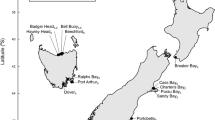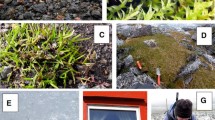Abstract
Exotic plant management often begins only after introduced taxa become widespread and problematic. Control efforts at this stage have a higher potential to lead to unintended outcomes in native systems. We explored the impacts of ongoing invasive plant management on a native ectotherm, the copperhead (Agkistrodon contortrix), in a landscape heavily impacted by multiple nonnative plant species. We found that habitats undergoing invasive plant control are preferred by snakes over other available habitats, but these individuals are at greater risk of injury and mortality owing to policy-driven methods of control. At the same time, we show that management can reverse invader impacts, notably reclaiming thermoregulatory opportunities for ectotherms, thus offering benefits as well as challenges for such animals. This introduces a key dilemma for conservation as invasive plant management can reclaim critical resources while policy-driven control methods can undermine the success of these efforts. We outline several simple and direct solutions that may easily be incorporated into management plans.




Similar content being viewed by others
References
Aebischer NJ, Robertson PA, Kenward RE (1993) Compositional analysis of habitat use from animal radio-tracking data. Ecology 74:1313–1325
Agresti A (2002) Categorical data analysis, 2nd edn. John Wiley & Sons: Hoboken, NJ
Archie EA (2013) Wound healing in the wild: stress, sociality and energetic costs affect wound healing in natural populations. Parasite Immunol 35(374):385
Bateman HL, Merritt DM, Glenn EP, Nagler PL (2015) Indirect effects of biocontrol of an invasive riparian plant (Tamarix) alters habitat and reduces herpetofauna abundance. Biol Invasions 17:87–97
Battin J (2004) When good animals love bad habitats: ecological traps and the conservation of animal populations. Conserv Biol 18:1482–1491
Best LB (1986) Conservation tillage: ecological traps for nesting birds? Wildl Soc Bull 14(3):308–317
Buckley YM, Anderson S, Catterall CP, Corlett RT, Engel T, Gosper CR, Nathan R, Richardson DM, Setter M, Spiegel O (2006) Management of plant invasions mediated by frugivore interactions. J Appl Ecol 43:848–857
Calenge C (2006) The package “adehabitat” for the R software: a tool for the analysis of space and habitat use by animals. Ecol Model 197:516–519
Calenge C, Dufour A (2006) Eigenanalysis of selection ratios from animal radio-tracking data. Ecology 87:2349–2355
Carter ET (2012) Impacts of invasive plants on resource selection and thermoregulation by the Northern Copperhead (Agkistrodon contortrix mokasen). Purdue University Fort Wayne, http://opus.ipfw.edu/masters_theses/13
Carter ET, Eads BC, Ravesi MJ, Kingsbury BA (2015) Exotic invasive plants alter thermal regimes: implications for management using a case study of a native ectotherm. Funct Ecol 29:683–693
Caut S, Casanovas JG, Virgos E, Lozano J, Witmer GW, Courchamp F (2007) Rats dying for mice: modelling the competitor release effect. Austral Ecol 32:858–868
Chasko GG, Gates JE (1982) Avian habitat suitability along a transmission-line corridor in an oak-hickory forest region. Wildl Monogr 82:3–41
Courchamp F, Chapuis J-L, Pascal M (2003) Mammal invaders on islands: impact, control and control impact. Biol Rev 78:347–383
Delibes M, Gaona P, Ferreras P (2001) Effects of an attractive sink leading into maladaptive habitat selection. Am Natur 158:277–285
Durbian FE (2006) Effects of mowing and summer burning on the massasauga (Sistrurus catenatus). Am Midl Nat 155:329–334
Flaspohler DJ, Temple SA, Rosenfield RN (2001) Effects of forest edges on Ovenbird demography in a managed forest landscape. Conserv Biol 15:173–183
Gates JE, Gysel LW (1978) Avian nest dispersion and fledging success in field-forest ecotones. Ecology 59:871–883
Glass GE, Childs JE, Korch GW, LeDuc JW (1988) Association of intraspecific wounding with hantaviral infection in wild rats (Rattus norvegicus). Epidemiol Infect 101(02):459–472
Gunderson AR, Leal M (2015) Patterns of thermal constraint on ectotherm activity. Am Nat 185:653–664
Gunderson AR, Leal M (2016) A conceptual framework for understanding thermal constraints on ectotherm activity with implications for predicting responses to global change. Ecol Lett 19:111–120
Hacking J, Abom R, Schwarzkopf L (2014) Why do lizards avoid weeds? Biol Invasions 16:935–947
Hale R, Swearer SE (2016) Ecological traps: current evidence and future directions. R Soc B R Soc, Proc, p 20152647
Halliday WD, Blouin-Demers G (2015) A stringent test of the thermal coadaptation hypothesis in flour beetles. J Therm Biol 52:108–116
Harris S, Timmins SM (2009) Estimating the benefit of early control of all newly naturalised plants. Science for Conservation, vol 292. New Zealand Department of Conservation, Wellington
Hobbs RJ, Humphries SE (1995) An integrated approach to the ecology and management of plant invasions. Conserv Biol 9(4):761–770
Homoya MA, Abrell DB, Aldrich JA, Post TW (1985) The natural regions of Indiana. Proc Indiana Acad Sci 94:245–268
Huey RB, Kingsolver JG (1989) Evolution of thermal sensitivity of ectotherm performance. Trends Ecol Evol 4:131–135
Humbert J-Y, Ghazoul J, Walter T (2009) Meadow harvesting techniques and their impacts on field fauna. Agric Ecosyst Environ 130:1–8
Humbert JY, Ghazoul J, Sauter G, Walter T (2010) Impact of different meadow mowing techniques on field invertebrates. J Appl Entomol 134:592–599
Jarnemo A (2002) Roe deer Capreolus capreolus fawns and mowing-mortality rates and countermeasures. Wildl Biol 8:211–218
Johst K, Drechsler M, Thomas J, Settele J (2006) Influence of mowing on the persistence of two endangered large blue butterfly species. J Appl Ecol 43:333–342
Kingsbury BA, Gibson J (2012) Habitat management guidelines for amphibians and reptiles of the Midwestern United States. partners in amphibian and reptile conservation technical publication HMG-1, 2nd Edn. 155 pp
Kolbe JJ, Janzen FJ (2002) Impact of nest-site selection on nest success and nest temperature in natural and disturbed habitats. Ecology 83(1):269–281
Kuebbing S, Simberloff D (2015) Missing the bandwagon: nonnative species impacts still concern managers. NeoBiota 25:73–86
Lampert A, Hastings A, Grosholz ED, Jardine SL, Sanchirico JN (2014) Optimal approaches for balancing invasive species eradication and endangered species management. Science 344:1028–1031
Minton SA (2001) Amphibians and reptiles of Indiana. Indiana Academy of Science Indianapolis, Indiana
Reinert HK, Cundall D (1982) An improved surgical implantation method for radio-tracking snakes. Copeia 3:702–705
Ries P, Dix M, Ielmini M, Thomas D (2004) National strategy and implementation plan for invasive species management. United States Department of Agriculture, Forest Service, Washington, DC
Robertson BA, Hutto RL (2006) A framework for understanding ecological traps and an evaluation of existing evidence. Ecology 87:1075–1085
Robertson BA, Rehage JS, Sih A (2013) Ecological novelty and the emergence of evolutionary traps. Trends Ecol Evol 28:552–560
Rojas IG, Padgett DA, Sheridan JF, Marucha PT (2002) Stress-induced susceptibility to bacterial infection during cutaneous wound healing. Brain Behav Immun 16(1):74–84
Rotem G, Ziv Y, Gilad I, Bouskila A (2013) Wheat fields as an ecological trap for reptiles in a semiarid agroecosystem. Biol Conserv 167(349):353
Saumure RA, Herman TB, Titman RD (2007) Effects of haying and agricultural practices on a declining species: The North American wood turtle, Glyptemys insculpta. Biol Conserv 135:565–575
Simberloff D, Martin J-L, Genovesi P, Maris V, Wardle DA, Aronson J, Courchamp F, Galil B, García-Berthou E, Pascal M, Pyaek P, Sousa R, Tabacchi E, Vilà M (2013) Impacts of biological invasions: what’s what and the way forward. Trends Ecol Evol 28:58–66
Sogge MK, Sferra SJ, Paxton EH (2008) Tamarix as habitat for birds: implications for riparian restoration in the southwestern United States. Restor Ecol 16:146–154
Stellatelli OA, Vega LE, Block C, Cruz FB (2013a) Effects of tree invasion on the habitat use of sand lizards. Herpetologica 69:455–465
Stellatelli OA, Vega LE, Block C, Cruz FB (2013b) Effects on the thermoregulatory efficiency of two native lizards as a consequence of the habitat modification by the introduction of the exotic tree Acacia longifolia. J Therm Biol 38:135–142
Tews J, Brose U, Grimm V, Tielbörger K, Wichmann M, Schwager M, Jeltsch F (2004) Animal species diversity driven by habitat heterogeneity/diversity: the importance of keystone structures. J Biogeogr 31:79–92
Tompkins DM, Veltman CJ (2006) Unexpected consequences of vertebrate pest control: predictions from a four-species community model. Ecol Appl 16:1050–1061
USFWS, United State Fish and Wildlife Service (2009) Managing invasive plants: concepts, principles, and practices: physical methods in practice. In: United States Department of the Interior. http://www.fws.gov/invasives/staffTrainingModule/methods/physical/practice.html Accessed: Aug 16 2015
USFWS, United States Fish and Wildlife Service (1999) Endangered and threatened wildlife and plants; review of plant and animal taxa that are candidates or proposed for listing as endangered or threatened; annual notice of findings on recycled petitions; and annual description of progress on listing actions. Fed Reg 64:57534–57547
Valentine LE, Roberts B, Schwarzkopf L (2007) Mechanisms driving avoidance of non-native plants by lizards. J Appl Ecol 44:228–237
Vickery J, Tallowin J, Feber R, Asteraki E, Atkinson P, Fuller R, Brown V (2001) The management of lowland neutral grasslands in Britain: effects of agricultural practices on birds and their food resources. J Appl Ecol 38:647–664
Wilson BS (1992) Tail injuries increase the risk of mortality in free-living lizards (Uta stansburiana). Oecologia 92(1):145–152
Wittenberg R, Cock M (2001) Invasive alien species: a toolkit of best prevention and management practices. CAB International, Wallingford, Oxford
Acknowledgments
We thank Mark Jordan, Jordan Marshall, and Dan Simberloff for comments and suggestions, Richard Davis and Darrell Skinner for logistical support and facilities, and Daryl Karns and Hanover College for access to laboratory facilities. We thank Jance Carter, Lindsey Hayter, Andrew Hoffman, Tom Melton, and Dustin Owen for assisting with fieldwork. Research support was provided by the Indiana Academy of Science, Indiana—Purdue University Fort Wayne, and the IPFW Environmental Resources Center. All work was conducted under authorization by the Indiana Department of Natural Resources.
Author information
Authors and Affiliations
Corresponding author
Rights and permissions
About this article
Cite this article
Carter, E.T., Ravesi, M.J., Eads, B.C. et al. Invasive plant management creates ecological traps for snakes. Biol Invasions 19, 443–453 (2017). https://doi.org/10.1007/s10530-016-1289-9
Received:
Accepted:
Published:
Issue Date:
DOI: https://doi.org/10.1007/s10530-016-1289-9




